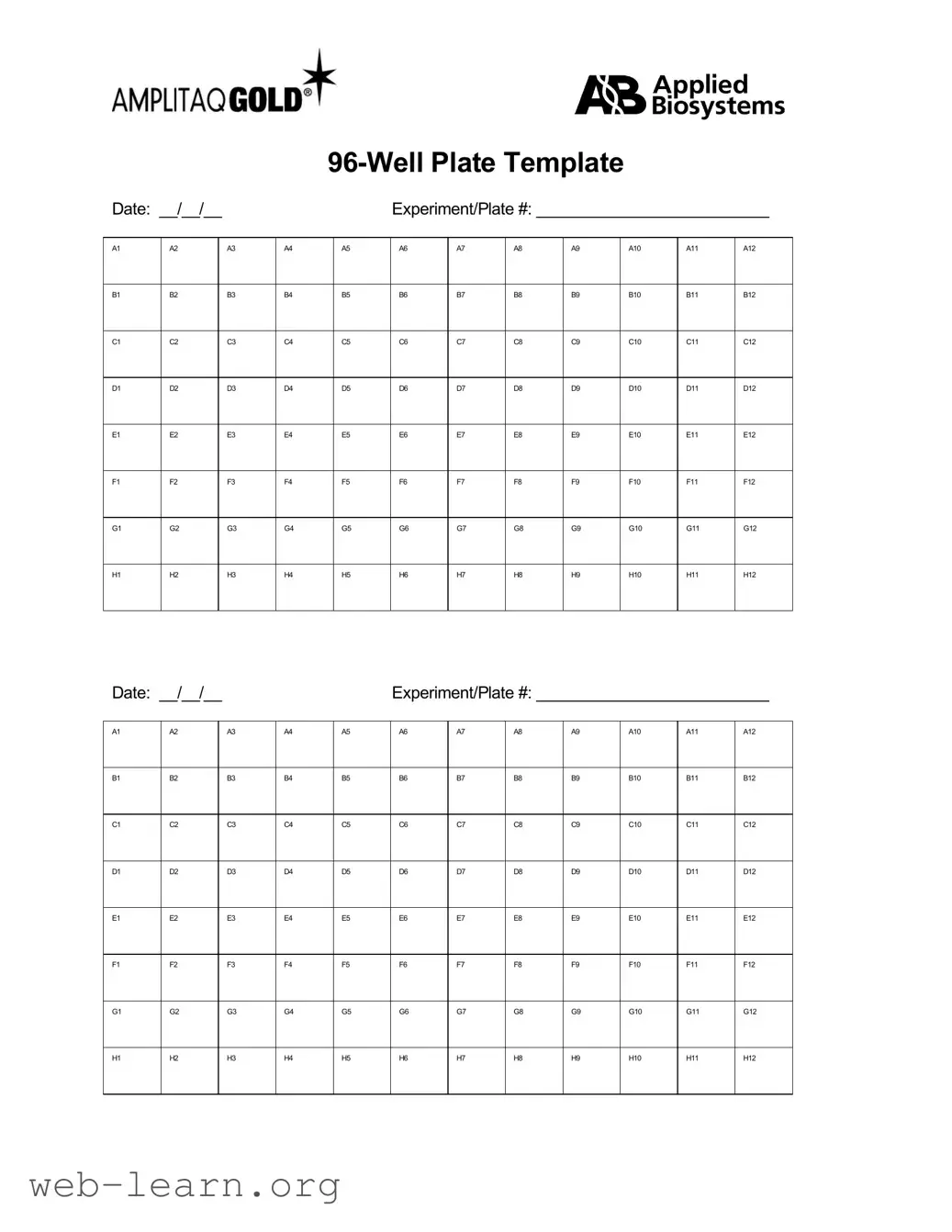Filling out the 96 Well form can be straightforward, but many people encounter common pitfalls that may hinder their success. One frequent mistake is leaving fields blank. Each section of the form is important for processing and should be completed thoroughly to avoid delays.
Another error involves incorrect data entry. Simple typos or miscalculations can lead to significant issues down the line. It is vital to double-check numbers, names, and any other information to ensure accuracy before submission.
Many individuals fail to follow the specified format for dates or addresses. For instance, different organizations may have their own preferences for how dates are recorded. When these formats aren’t adhered to, it can result in confusion and potential rejections.
Not including required supporting documents is another mistake that commonly occurs. Ensure that all necessary attachments or additional paperwork are submitted along with the form. Missing documents can lead to processing delays or outright rejection.
Underestimating the importance of signatures is yet another issue. Some individuals forget to sign the form or assume that it isn't necessary. Any form that requires a signature will not be considered complete without it.
People often neglect to read instructions carefully. Each section of the form comes with guidelines that clarify what is needed. Ignoring these can result in unnecessary errors and complications.
Relying on memory rather than referencing previous submissions or documents can lead to inconsistencies. When in doubt, refer back to prior submissions or information to ensure uniformity in details.
Misunderstanding deadlines is crucial and can not only affect the processing of the form but also lead to missed opportunities. Always check deadline dates and plan accordingly to ensure timely submission.
Some individuals attempt to make corrections on the form without following the proper procedures. Striking out information or using correction fluid can render the form invalid. Utilize correction methods approved by the issuing authority instead.
Finally, failing to keep a copy of the completed form for personal records can be a significant oversight. Retaining a copy allows for easy retrieval of information in the future and can be useful if any issues arise later on.

